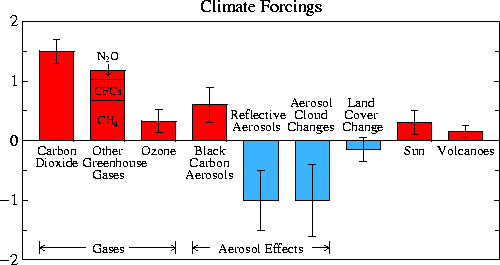Arctic sea ice continues to to trend below the numbers for 2007, and indeed below all the years in the
IJIS database. The seasonal anomaly is relatively stable at roughly a million square kilometers below the 1979-2009 average. And the volume of ice is plummeting, according to PIOMAS:

None of this, needless to say, impresses Steve Goddard, who is responding by doubling down on the crazy. Eschewing the wise denier strategy of simply ignoring the unfavorable data in favor of obsessing over cherry-picked short-term trends, Stevie to still worrying the Arctic sea ice, and looking progressively more batty as he does so.
It was only a few weeks ago that Ben Lawson predicted, sensibly it appeared at the time, that WUWT's increasingly embarrassing "sea ice updates" would be quitely phased out as the fact of the Arctic's rapid ice loss took its toll. His reasoning seemed sound, but it was predicted on Steve Goddard's having a working brain with a normal human capacity for shame. Instead of backing off, Stevie's gone from one sea ice post per week to this:
http://wattsupwiththat.com/2010/05/28/does-piomass-verify/
http://wattsupwiththat.com/2010/06/01/piomas-non-verification-ii/
http://wattsupwiththat.com/2010/06/02/the-undeath-spiral/
http://wattsupwiththat.com/2010/05/31/wuwt-arctic-sea-ice-new-7/
http://wattsupwiththat.com/2010/05/29/arctic-ice-volume-has-increased-25-since-may-2008/
http://wattsupwiththat.com/2010/05/28/the-great-2007-ice-crunch/
http://wattsupwiththat.com/2010/05/27/shear-ice-decline/
http://wattsupwiththat.com/2010/05/25/past-the-tipping-point/
http://wattsupwiththat.com/2010/05/24/the-sea-ice-monster-its-a-scaly-thing/
http://wattsupwiththat.com/2010/05/23/wuwt-arctic-sea-ice-news-6/
That's is
the last two weeks alone. Five posts per week, slaving over a hot search engine, trying to rationalize his way out of his little trouble.
As one would expect for someone afflicted with this kind of essayists' diarrhea, Steve throws a lot of arguments out there to see what sticks, but for those without the patience to wade through the dreck, read on for the bullet points.
After heaping scorn on scientists for drawing attention to the loss of sea ice volume, Steve decides to change course 180 degrees and push aside sea ice extent to talk about volume. This is the exact behavior he accused climate scientists of
here:
The AGW chameleon changes it’s colours constantly. It complains about area and extent when convenient, and about thickness when convenient.
Sea ice extent is doing the opposite of what Steve wants, so suddenly tracking the volume -- a measure both he and Watts himself have repeatedly scorned as changing the subject -- is the subject of post after post. Blatant hypocrisy aside, this is a bit of a problem, since the ice volume is also at record lows. Steve tries to edge his way around this problem by suddenly discovering that the PIOMAS measurements of ice volume, which are used everywhere, are supposedly "unverified" and untrustworthy. See
here and
here.
Steve has his own, really obscure data set, created by the Navy for short-term forecasting, which is not used, as far as I've been able to determine, by any climatologists anywhere, and is in process of being replaced by a different and hopefully better model. But hey, it shows volume increasing over the past few years. Cool! This is how the model is described by its creators:
Currently the NIC uses the Polar Ice Prediction System (PIPS) version 2.0 as the basis for its “operational” short-term (24–120 h) sea ice forecasts. These forecasts are evaluated daily and amended by skilled analysts using reconnaissance data (if available), the most recent weather charts and data, and historical knowledge of the conditions in the area to provide the highest quality forecasts possible out to 120 h. Special emphasis in these forecasts is placed on the location of the ice edge and the conditions in the marginal ice zone (MIZ), as these are the most critical operational areas for marine transportation and safety.
The system is used for short-term forecasting, is focused on the ice edge, and is not particularly accurate even there:
Using the more relaxed criterion of a threat index for defining correct forecasts, it was found that PIPS correctly made 24-h forecasts of decreasing sea ice concentration 10%–15% of the time (it also correctly forecast increasing sea ice concentration an additional 10%–15% of the time). However, PIPS correctly forecast melt-out conditions <5% of the time, suggesting that there may be deficiencies in the PIPS parameterization of marginal ice zone processes and/or uncertainties in the atmospheric–oceanic fields that force PIPS.
Not exactly confidence-inducing. Steve is using this data is a way it was never intended to be used, rather than the system designed and maintained to estimate ice volume -- that is, PIOMAS. An alert commenter at Skeptical Science, Michael Sweet,
spots one potential problem:
I just looked at the Navy website. The red color shows ice AT LEAST 5 meters thick. Much of that ice was 10 or more meters thick (some was over 30 meters thick)in past years. You cannot integrate it as 5 meters thick. This results in underestimating the ice volume in past years. This alone is probably enough to explain the difference between you and PIOMAS.
This is really just scratching the surface of the snake oil Goddard is hawking in the word salad it pleases him to call his prose. But it's beautiful outside, and I'm not spending any more of my Saturday with Stevie. I'll leave you with this quote, from the comments on WUWT. In my next post, I'm going to answer the question posed:
Has anyone actually explained exactly WHY and HOW an ice-free Arctic is such a disaster? And for whom would it be a disaster? And in what way it would be a disaster? --Kevin Cave




